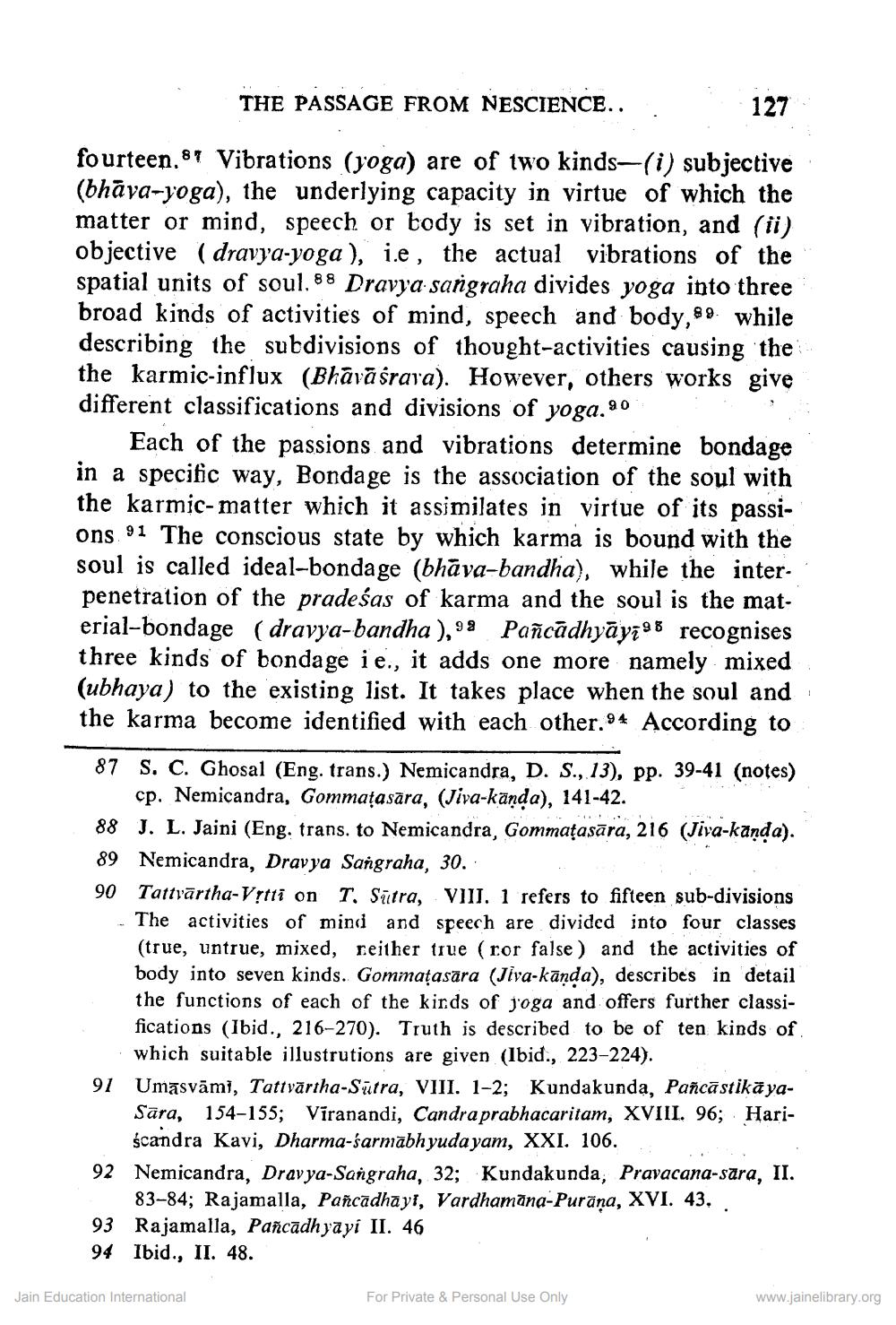________________
THE PASSAGE FROM NESCIENCE...
127
fourteen.87 Vibrations (yoga) are of two kinds-(i) subjective (bhāva-yoga), the underlying capacity in virtue of which the matter or mind, speech or body is set in vibration, and (ii) objective ( dravya-yoga), i.e, the actual vibrations of the spatial units of soul. 88 Dravya sangraha divides yoga into three broad kinds of activities of mind, speech and body, 89. while describing the subdivisions of thought-activities causing the the karmic-influx (Bhāvā śrava). However, others works give different classifications and divisions of yoga. 90
Each of the passions and vibrations determine bondage in a specific way, Bondage is the association of the soul with the karmic-matter which it assimilates in virtue of its passions 91 The conscious state by which karma is bound with the soul is called ideal-bondage (bhāva-bandha), while the interpenetration of the pradeśas of karma and the soul is the material-bondage (dravya-bandha ), 9a Pañcădhyāy798 recognises three kinds of bondage i e., it adds one more namely mixed (ubhaya) to the existing list. It takes place when the soul and the karma become identified with each other.94 According to
87 S. C. Ghosal (Eng. trans.) Nemicandra, D. S., 13), pp. 39-41 (notes)
cp. Nemicandra, Gommațasāra, (Jiva-kända), 141-42. 88 J. L. Jaini (Eng. trans. to Nemicandra, Gommațasāra, 216 (Jiva-kānda). 89 Nemicandra, Dravya Sangraha, 30. 90 Tattvārtha-Vrtti on T, Satra, VIII. 1 refers to fifteen sub-divisions
The activities of mind and speech are divided into four classes (true, untrue, mixed, reither true (ror false) and the activities of body into seven kinds. Gommațasāra (Jiva-kānda), describes in detail the functions of each of the kirds of joga and offers further classi
fications (Ibid., 216-270). Truth is described to be of ten kinds of · which suitable illustrutions are given (Ibid., 223-224). 91 Umāsvāmi, Tattvārtha-Sutra, VIII. 1-2; Kundakunda, Pañcāstikāya
Sāra, 154-155; Viranandi, Candra prabhacaritam, XVIII. 96; Hari
scandra Kavi, Dharma-sarmabh yuda yam, XXI. 106. 92 Nemicandra, Dravya-Sangraha, 32; Kundakunda, Pravacana-sara, II.
83-84; Rajamalla, Pañcadhayi, Vardhamana-Purāņa, XVI. 43. . 93 Rajamalla, Pañcādhyayi II. 46 94 Ibid., II. 48.
Jain Education International
For Private & Personal Use Only
www.jainelibrary.org




